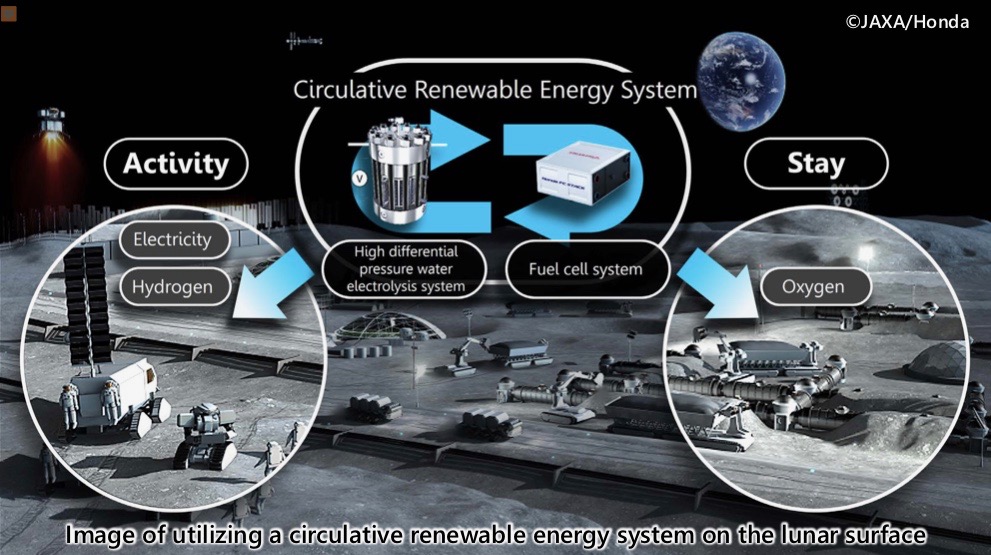
Honda wants to do some serious off-roading.
The Japanese carmaker recently announced that it's developing a small, reusable rocket, as part of a larger vision to expand its operations into the final frontier. Work on the launcher began in late 2019, and Honda already has some serious hardware to show for it: a brand-new rocket engine.
During a Zoom call with reporters on Oct. 28, Honda representatives showed a short video of the prototype engine performing a combustion test. Everything appeared to go well. For example, Mach diamonds — a standing wave pattern that's a common feature of supersonic exhaust — were clearly visible in the engine's plume.
"We believe that we have made huge progress in this development after only two years," Atsushi Ogawa, operating officer for innovative research excellence at Honda R&D, said during the Zoom call.
Related: The history of rockets

Honda did not provide many details about the engine. The video was black and white for proprietary reasons, and company representatives asked that no screenshots of the test be shared.
Honda envisions the rocket being used to launch payloads weighing up to 1 ton or so. The baseline plan calls for the launcher to have a reusable first stage, but that could change if analyses show that 3D printing or other technologies make an expendable vehicle more cost effective, company representatives said during last week's call.
Get the Space.com Newsletter
Breaking space news, the latest updates on rocket launches, skywatching events and more!
Honda hopes to conduct a suborbital test launch sometime this decade, then advance to orbital flight from there. But there's no guarantee the vehicle will actually get off the ground; Honda expects to make a final decision about entering the launch industry in 2025 or 2026, after assessing the progress made by that point and analyzing the state of the market, company representatives said on the call.
The rocket work is part of a larger off-Earth push by the venerable carmaker.
"At Honda, we're going to accelerate our R&D in the field of space, which we view as a place to take on challenges to realize the dreams and potential of people worldwide while leveraging our core technologies," Ogawa said.
For example, in June, Honda and the Japan Aerospace Exploration Agency (JAXA) announced that they're teaming up to assess the feasibility of a "circulative renewable energy system" that could support rovers and human outposts on the moon. The system would employ "Honda’s high differential pressure water electrolysis and fuel cell technologies," JAXA officials said.
Honda's robotics research could also have space applications. For example, the company is working to improve robotic autonomy, which would be a big plus in the final frontier, company representatives said: It's challenging to control robots far from Earth, given the communications delay imposed by the vast distances involved.
"We believe that this research will lead to increased utilization of avatar robots on the surface of the moon and other environments," Ogawa said.
Mike Wall is the author of "Out There" (Grand Central Publishing, 2018; illustrated by Karl Tate), a book about the search for alien life. Follow him on Twitter @michaeldwall. Follow us on Twitter @Spacedotcom or Facebook.
Join our Space Forums to keep talking space on the latest missions, night sky and more! And if you have a news tip, correction or comment, let us know at: community@space.com.

Michael Wall is a Senior Space Writer with Space.com and joined the team in 2010. He primarily covers exoplanets, spaceflight and military space, but has been known to dabble in the space art beat. His book about the search for alien life, "Out There," was published on Nov. 13, 2018. Before becoming a science writer, Michael worked as a herpetologist and wildlife biologist. He has a Ph.D. in evolutionary biology from the University of Sydney, Australia, a bachelor's degree from the University of Arizona, and a graduate certificate in science writing from the University of California, Santa Cruz. To find out what his latest project is, you can follow Michael on Twitter.









